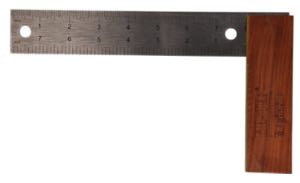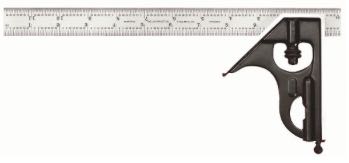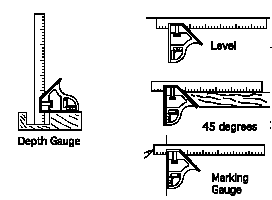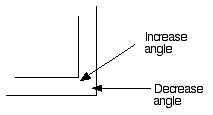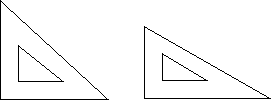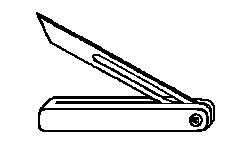Dr ill bits
ill bits
Helping Woodworkers Online for Over 20 Years
Squares 101
| It is pretty well impossible to do any assembly without at least one accurate square, not only do they indicate your corners are bang on, most also have scales for measuring lengths and widths. There are three basic types to have in your tool kit, a steel square, a combination square and a try square. |
|
Framing Square
With this tool it is possible to layout and measure just about everything in the construction of a house from the basement stairs on up to the attic rafters. It may also be refered to as a steel square or a carpenters square. The most common size has a 24" blade and a 16" tongue, however there are smaller sizes available but like some cheaper versions of the larger style they do not have the framing tables stamped on them. The Steel Square and How to Use It. Try Square
These squares have a steel tongue fixed into a wooden handle, they range in size from 3" to 12", some have inch scales on them others are blank. They are very handy for furniture and cabinet making as they are small enough to fit in confined spaces. Combination Square
This is a two peice unit with a head that slides along a steel blade, it measures both 45° and 90°. Many models come with a level built into the head. This is an excellent first tool for anyone starting out. There is a broad range of choices, from very inexpensive to very expensive, a good quality one somewhere in the middle will be adequate for most. This aquare has many uses, as shown below.
The first thing to do with any square is to check it for accuracy, this should be done in the store before purchasing it if possible.
|


